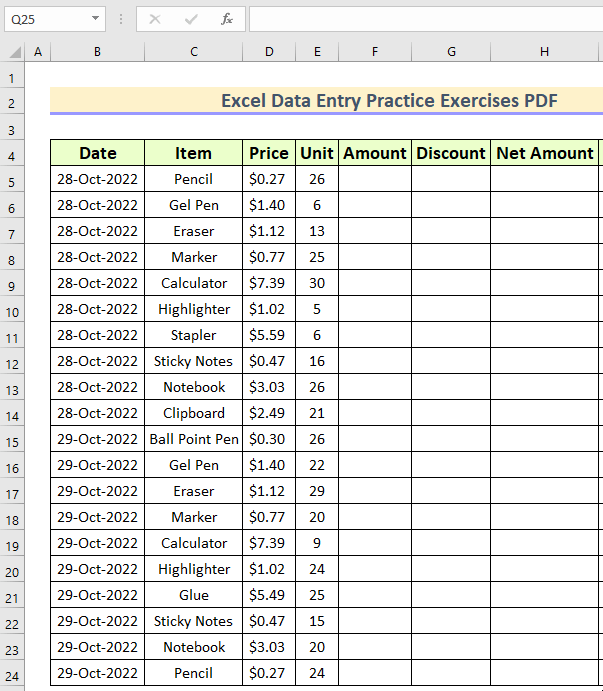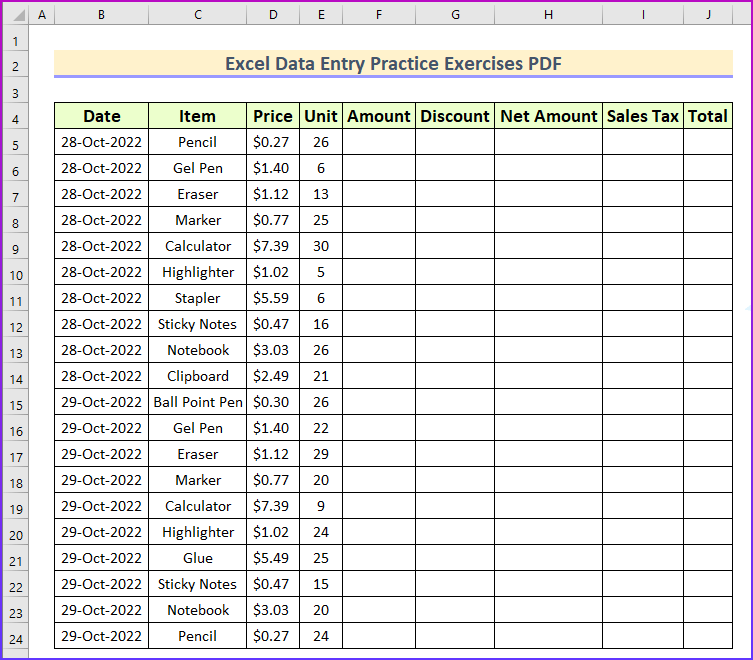It’s essential to ensure that the data meets these assumptions to obtain accurate and reliable results. By using an Anova calculator, researchers and data analysts can quickly and easily perform variance analysis and gain valuable insights into their data. In statistics, variance assesses how effectively the mean represents a dataset. Higher variance suggests greater data range, potentially making the mean less representative, unlike in cases of lower variance. You will need the mean of the data set, arithmetic difference, and many additions and subtractions to find variance. In statistics, the variance of a random variable is the mean value of the squared distance from the mean.
Statistical Mean Formula
This tool is useful to calculate sample variance even when analyzing a subset of data, especially when it’s impractical to collect data from an entire population. Sample variance and population variance differ mainly in their data scope and formulas. Population variance, however, includes the squared deviations for the entire population and divides the sum of squared differences by the total number of data points.
In statistics, household employment taxes the average of the squared deviations from the mean is said to be the variance. It decides whether the data values are closer or far from the average value. Population variance is used when analyzing an entire dataset, dividing by n (total number of values).
Using a Variance Calculator: Step by Step Solution
The calculator will automatically recognize and process the numbers, ensuring they are valid for calculations. In simpler terms, if all data in a set are very similar to each other, the variance will be low, indicating little dispersion. Conversely, if the data vary significantly, the variance will be high, signaling greater dispersion. Using the wrong formula can lead to incorrect interpretations, especially in research or financial analysis.
Understanding this helps in making more informed decisions and in evaluating the reliability of data. Variance and standard deviation are fundamental statistical concepts that measure the spread of data points in a dataset. While variance shows how far numbers are from the mean, standard deviation provides a more intuitive measure by representing the dispersion in the same unit as the data. In this equation, σ2 refers to population variance, xi is the data set of population, μ is the mean of the population data set, and N refers to the size of the population data set. It can be disproportionately influenced by outliers, which significantly impact the sum of all the squared differences together. Additionally, variance does not indicate the direction of data spread and can be less intuitive due to the squaring of all the squared differences together.
Step 2: Clicking the Calculate Button
To calculate the variance from a set of values, specify whether the data is for an entire population or from a sample. Values must be numeric and may be separated by commas, spaces or new-line. Population variance is calculated when data for the entire population is available. It is obtained by dividing the sum of the squared differences between each data point and the population mean by the total number of data points in the population (N). This formula does not require correction, as it is based on all available data. Sample variance is calculated when only a sample of the population is available.
The F-statistic and p-value are used to determine the significance of the differences. Use this calculator to compute the variance from a set of numerical values. A small variance indicates the distribution of the random variable close to the mean value. If the variance is greater, it shows that the random variable is far from the average value. In summary, variance allows you to see how data cluster around the mean and whether there is a lot or little variability in the set.
Calculating values from the table:
- Higher variance suggests greater data range, potentially making the mean less representative, unlike in cases of lower variance.
- For an unbiased statistic, we expect to get a standard deviation of 4 and a variance of 16.You may notice that dividing by (n-1) yields better results than dividing by n.
- Sample variance is used when working with a subset of data, dividing by n-1 to account for sampling variability.
- It helps analysts understand data variability, assess risk in finance, and make informed decisions based on data trends.
A population variance and sample variance formula calculator simplifies the process of determining the dispersion of data points in a data set. Whether you need to calculate population variance, sample variance, or both, this tool offers a step-by-step solution, ensuring accuracy and ease. Variance stands as a cornerstone in statistical analysis, offering deep insights into the dispersion and variability of data within a whole set of data. Understanding and accurately calculating variance, both for a sample and an entire population, is essential for making informed decisions based on data. This guide will delve into various aspects of variance calculation, emphasizing the role of a Variance Calculator in simplifying this process. Population variance is calculated using the population variance formula.
Follow these steps to measure the variance for the given data set using this formula. Variance calculator is an online free tool to calculate the variation of each number in a data set from the mean value of that data set. You can use this tool to understand and solve complex and lengthy variance problems. You can solve this problem by using the population variance calculator above or manually. Sample variance uses n-1 in the denominator instead of n to correct for bias when estimating population variance from a sample. This makes sample variance slightly larger than population variance in most cases.
Variance formula
- In statistics, the variance of a random variable is the mean value of the squared distance from the mean.
- Understanding this helps in making more informed decisions and in evaluating the reliability of data.
- The term “population” refers to the entire number of relevant observations.
- Use the variance calculator to compute both sample variance and population variance, complete with a step-by-step solution, and then present the results in APA format.
- Choosing the correct type of variance—population or sample—is crucial for accurate statistical analysis.
You can also use the population variance calculator above to calculate the variance for your set of data. The first example is of population variance and the second example is of sample variance. Variance calculator is used to find the variance of sample and population data. This variance solver also finds the standard deviation, the mean, and the statistical sum of squares in one click. Variance analysis is a crucial aspect of statistical analysis, enabling researchers and data analysts to understand the differences between various groups or datasets. One of the most widely used methods for variance analysis is the Analysis of Variance (ANOVA).
It helps researchers and data analysts to compare the means of two or more groups and determine if there are any significant differences between them. The variance is one of the measures of dispersion, that is a measure of by how much the values in the data set are likely to differ from the mean of the values. Squaring the deviations ensures that negative and positive deviations do not cancel each other out. It represents the average of squared differences between each value and the mean.
This calculator provides the result of the mean, standard deviation, and the sum of squares along with steps. When you do not have data for the entire population, you calculate the sample variance from the sampled data. Unlike population variance, when calculating the sample variance, you divide by (n – 1); in this case, the resulting statistic is unbiased.
Variance is a statistical measure that indicates how much a set of numbers differs from the mean (average) value. It helps determine the spread or dispersion of data points within a dataset. A higher variance means that the numbers are more spread out, while a lower variance indicates that they are closer to the mean. Variance is a statistical measure that quantifies the dispersion or variability of a data set with respect to its statistical mean. Essentially, variance indicates how far individual values are from the average of the data set.
If you are working with a sample, divide the sum of the squares by the total number of data points minus one (n-1) to obtain the sample variance. If you are working with the entire population, divide by the total number of data points (N) to obtain the population variance. Population standard deviation is calculated from the entire population using the population mean, while sample population standard deviation only uses sample data and the sample mean. The formula for each is the square root of their respective variances, aligning the values of the units of measure with those of the data. It represents the square root of the variance, providing a measure of data spread in the same units as the data itself. Variance calculator is used to find the actual distance of the data values from the mean.
A variance calculator is a statistical tool used to calculate the variance of a set of data. It simplifies the process to calculate variance, by automating the computation of squared differences between each data point and the mean. Users input a series of data values, and the variance calculator provides the variance, indicating the degree of spread in the data set. This tool is particularly useful in data analysis, saving time and reducing errors that can occur in manual calculations. A sample variance calculator is a tool designed for calculating the variance of a sample data set. It applies the sample variance formula, considering the sample mean and the sample size.
Specify whether the total number of data points represent a sample population or the entire population. This choice will determine the variance formula used in the calculation. Scroll the above table for more results.Choose the population variance only if you have the data from the entire population, otherwise use the sample variance.


